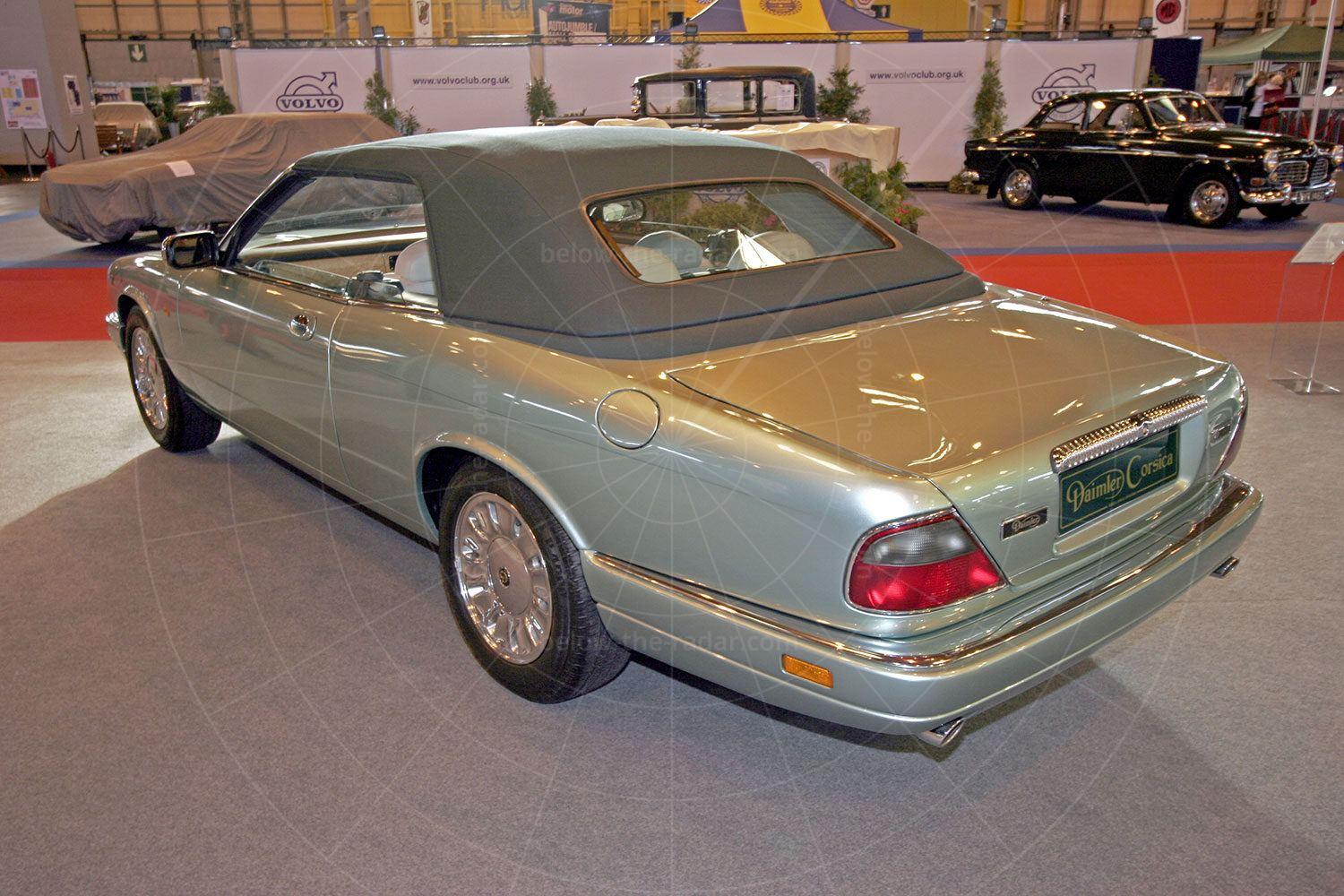Some one-offs deserved to be made in much bigger numbers and the Daimler Corsica is perhaps one of the greatest examples of this. Created in 1996 to celebrate 100 years of Daimler car production, the Corsica was the result of an 18-month project undertaken by Jaguar's Special Vehicle Operations (SVO).
Based on a Daimler X300 saloon and finished in the fabulous hue of Peppermint Green from Jaguar's Insignia colour chart, the Corsica took its name from a 1931 Daimler drophead coupé which was bodied by London-based coachbuilder Corsica. The X300-based Corsica that was unveiled 65 years later was the brainchild of Jaguar's PR guru David Boole, who reckoned Daimler should mark its centenary in style. It's fair to say that was achieved, although unfortunately Boole died before the Corsica was unveiled.
Special Vehicle Operations didn't just hack off the X300's roof of course. They shortened the car's wheelbase by 150mm, which reduced rear-seat leg room but still allowed the Corsica to be a four-seater (of sorts). Such a reduction was key if any rigidity in the bodyshell was going to be retained, although the car wasn't a runner when it was unveiled anyway – although it had originally been intended to be.
When the Corsica was revealed in 1996 there was no mention of which engine was fitted, and that's because there wasn't one – the car was purely a static exhibit. It would be more than a decade before the Corsica was truly a runner, after the Jaguar Enthusiasts' Club and independent Jaguar specialist David Marks collaborated to finish it off, with the project starting in 2006.
To get the car sorted they had to make a shortened propshaft and exhaust, fit new brake and fuel lines, make a new fuel tank and strengthen the front bulkhead. The air conditioning, anti-lock brakes and airbags also had to be fitted and made functional, plus there was also the small matter of fitting an engine and gearbox; a 4.0-litre straight-six was slotted in along with a five-speed automatic transmission.
Some of the biggest jobs though, were to get the power-operated soft top working properly. That meant fitting a new wiring loom along with the hydraulic pumps to activate the rams; SVO had done a great job of making the roof fit (complete with hard tonneau and glass rear window), but now it had to work seamlessly.
At last in summer 2007, 11 years after it had first been shown, the Daimler Corsica was fully driveable and ready for doing the rounds at classic car events all over the UK.











